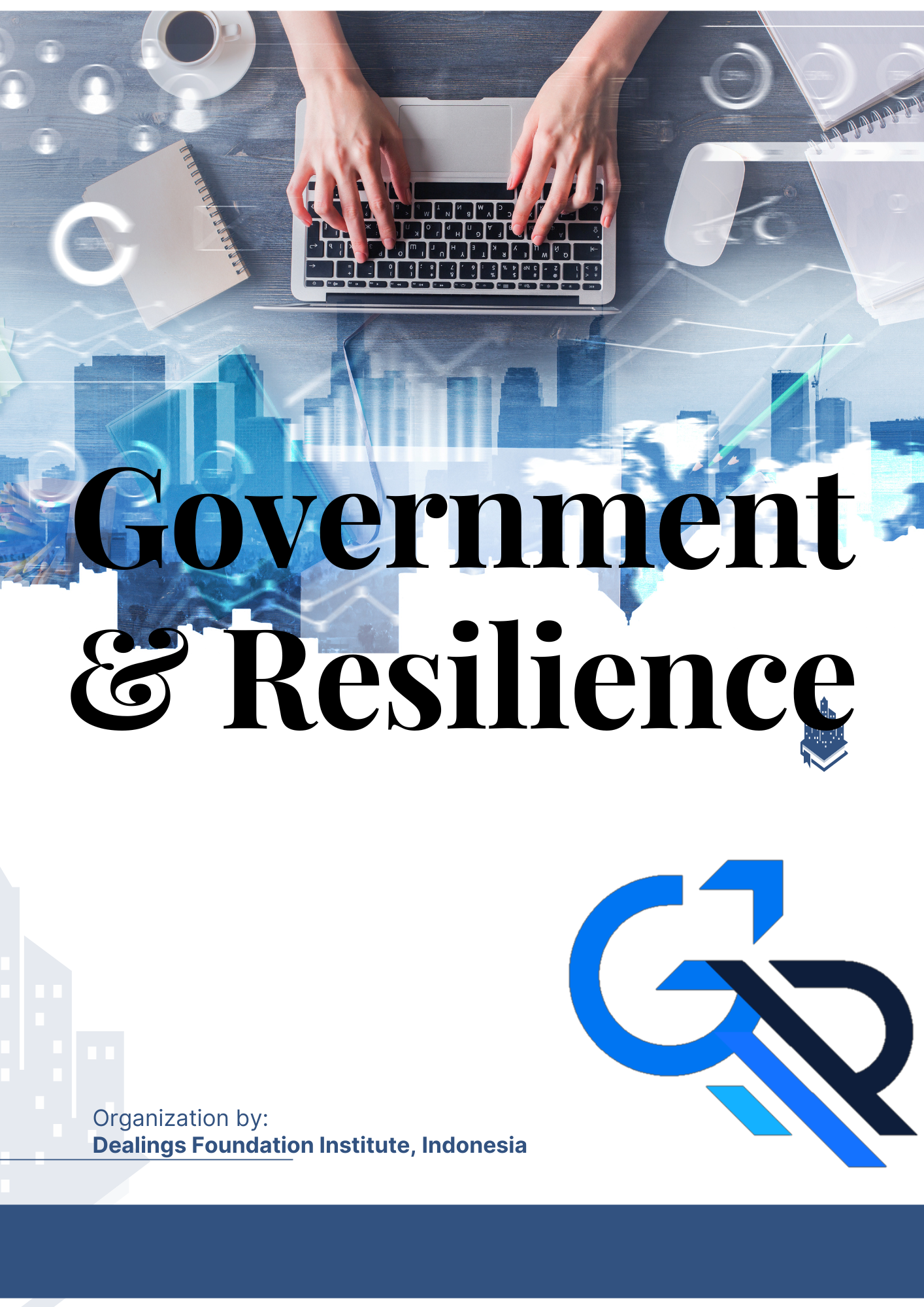Islamic Economy in Supporting Community Resilience Through Business Assistance Programs
DOI:
https://doi.org/10.62503/gr.v3i1.27Keywords:
Zakat Empowerment, Business Assistance, Business Growth, Social WelfareAbstract
This study examines the impact of empowerment programs and business assistance on mustahiq welfare in Amil Zakat Institutions in Banten, with business growth as a mediating variable. A total of 160 respondents who have participated in the empowerment program were selected for analysis. This study uses the Structural Equation Modeling-Partial Least Square (SEM-PLS) approach to test the relationship between these variables. There is a significant influence between zakat empowerment on mustahiq welfare, business assistance on mustahiq welfare, and business assistance on business development, while business development on mustahiq welfare and zakat empowerment on business development do not have a significant influence. The need to increase the Zakat empowerment program is considered very important because Zakat empowerment can improve the welfare of mustahiq up to 27.1%. However, the contribution of business growth to mustahiq welfare is structurally still low. Nevertheless, increasing business growth is still considered important because it can improve mustahiq welfare.
References
Abang Abai, D. S., Awang, M. D., Mohd Yusoff, A. N., Ab. Majid, A., & Hamli, H. (2020). Bentuk Bantuan Modal Agihan Zakat Asnaf dan Pencapaian Usahawan Asnaf di Malaysia: Kajian Empirikal. Malaysian Journal of Social Sciences and Humanities (MJSSH), 5(1), 93–99. https://doi.org/10.47405/mjssh.v5i1.353
Abdul Manan, H., Muhamat, A. A., & Rosly, H. E. (2011). An appraisal by its entrepreneurial asnaf (Usahawan Asnaf) on Lembaga Zakat Selangor’s Role in ensuring business success: An empirical study on the Lembaga Zakat Selangor. 2011 IEEE Colloquium on Humanities, Science and Engineering, 580–585. https://doi.org/10.1109/CHUSER.2011.6163800
Aditya Hadid Riyadi, Abdukadir Abdullahi Sheik Abdukad, Bandar Mohammed Saif, Hawa Ahmed Takow, & Ashurov Sharofiddin. (2021). The Effect of Utilizing Zakat Fund on Financing Production to Achieving Social Welfare: in Indonesia as a Case Study. Journal of Islamic Finance, 10. https://doi.org/10.31436/jif.v10i.524
Adiwijaya, Z. A., Suprianto, E., & Rusdi, D. (2023). Mustahik Micro Business Incubation in Poverty Alleviation (pp. 64–75). https://doi.org/10.1007/978-3-031-26281-4_7
Albahri, A. S., Alnoor, A., Zaidan, A. A., Albahri, O. S., Hameed, H., Zaidan, B. B., Peh, S. S., Zain, A. B., Siraj, S. B., Alamoodi, A. H., & Yass, A. A. (2021). Based on the multi-assessment model: Towards a new context of combining the artificial neural network and structural equation modelling: A review. Chaos, Solitons & Fractals, 153, 111445. https://doi.org/10.1016/j.chaos.2021.111445
Anis, F. M., & Kassim, S. H. (2016). Effectiveness of Zakat-Based Programs on Poverty Alleviation And Economic Empowerment of Poor Women: A Case Study Of Bangladesh. Journal of Islamic Monetary Economics and Finance, 1(2), 229–258. https://doi.org/10.21098/jimf.v1i2.539
Bellera, C. A., Foster, B. J., & Hanley, J. A. (2012). Calculating Sample Size in Anthropometry. In Handbook of Anthropometry (pp. 3–27). Springer New York. https://doi.org/10.1007/978-1-4419-1788-1_1
Ben Jedidia, K., & Guerbouj, K. (2021). Effects of zakat on the economic growth in selected Islamic countries: empirical evidence. International Journal of Development Issues, 20(1), 126–142. https://doi.org/10.1108/IJDI-05-2020-0100
Brody, C., de Hoop, T., Vojtkova, M., Warnock, R., Dunbar, M., Murthy, P., & Dworkin, S. L. (2015). Economic Self‐Help group Programs for Improving Women’s Empowerment: A Systematic Review. Campbell Systematic Reviews, 11(1), 1–182. https://doi.org/10.4073/csr.2015.19
Cheung, M. W.-L. (2013). Implementing Restricted Maximum Likelihood Estimation in Structural Equation Models. Structural Equation Modeling: A Multidisciplinary Journal, 20(1), 157–167. https://doi.org/10.1080/10705511.2013.742404
Clutterbuck, D., Whitaker, C., & Lucas, M. (2016). Coaching Supervision. Routledge. https://doi.org/10.4324/9781315687070
Daniel, F., Silva, A., & Ferreira, P. (2015). Contributions to the Discussion on the Assessment of the Reliability of a Measurement Instrument. Revista de Enfermagem Referência, IV Série(7), 129–137. https://doi.org/10.12707/RIV15003
de Haan, E., & Birch, D. (2021). Supervision for organization consultants and the organizations they work with. Consulting Psychology Journal: Practice and Research, 73(3), 214–228. https://doi.org/10.1037/cpb0000204
Doran, J., McCarthy, N., & O’Connor, M. (2018). The role of entrepreneurship in stimulating economic growth in developed and developing countries. Cogent Economics & Finance, 6(1), 1442093. https://doi.org/10.1080/23322039.2018.1442093
Fikriyah, K., & Ridlwan, A. A. (2018). The Evaluation of Mustahiq Empowerment-Based Poverty Alleviation Program at Amil-Zakat Organizations. International Journal of Islamic Business and Economics (IJIBEC), 65–73. https://doi.org/10.28918/ijibec.v2i1.1263
Gunzler, D. D., & Morris, N. (2015). A tutorial on structural equation modeling for analysis of overlapping symptoms in co‐occurring conditions using MPlus. Statistics in Medicine, 34(24), 3246–3280. https://doi.org/10.1002/sim.6541
Hamadou, I., & Mamadou Salieu Jallow. (2024). The Effect of Distributed Zakat on Sustainable Economic Development in Indonesia: A VECM Approach. EkBis: Jurnal Ekonomi Dan Bisnis, 8(1), 42–58. https://doi.org/10.14421/EkBis.2024.8.1.2172
Hana Mabrukah, & Anwar Ibrahim Sadiq. (2024). Transformation of Zakat Into Rotating Business Capital: A Sustainable Economic Empowerment Solution. Journal of Lslamic Economics and Bussines Ethics, 1(3), 163–175. https://doi.org/10.24235/jiesbi.v1i3.212
Ivan Rahmat Santoso, Syahrir Mallongi, Siradjuddin, & Muhammad Basir Paly. (2024). Mediating Effects Of Islamic Business Success On Productive Zakat And Mustahiq Welfare. International Journal of Business and Society, 25(1), 111–127. https://doi.org/10.33736/ijbs.6903.2024
Jackson, D. L. (2007). The Effect of the Number of Observations per Parameter in Misspecified Confirmatory Factor Analytic Models. Structural Equation Modeling: A Multidisciplinary Journal, 14(1), 48–76. https://doi.org/10.1207/s15328007sem1401_3
Jaenudin, M., & Herianingrum, S. (2022). Zakat, Infaq, Sadaqah On Mustahik Income To Realize No Poverty In Indonesian Zakat Institution. Jurnal Ekonomi Dan Bisnis Islam (Journal of Islamic Economics and Business), 8(1), 134–152. https://doi.org/10.20473/jebis.v8i1.36360
Jongerling, J., López-Pernas, S., Saqr, M., & Vogelsmeier, L. V. D. E. (2024). Structural Equation Modeling with R for Education Scientists. In Learning Analytics Methods and Tutorials (pp. 705–721). Springer Nature Switzerland. https://doi.org/10.1007/978-3-031-54464-4_21
Mahon, D., & Norton, M. J. (2024). The Supervision of Peers. In Peer Support Work (pp. 105–114). Emerald Publishing Limited. https://doi.org/10.1108/978-1-83753-018-220241010
Malone, H. E., Nicholl, H., & Coyne, I. (2016). Fundamentals of estimating sample size. Nurse Researcher, 23(5), 21–25. https://doi.org/10.7748/nr.23.5.21.s5
Mawardi, I., Widiastuti, T., Al Mustofa, M. U., & Hakimi, F. (2023). Analyzing the impact of productive zakat on the welfare of zakat recipients. Journal of Islamic Accounting and Business Research, 14(1), 118–140. https://doi.org/10.1108/JIABR-05-2021-0145
Mcmullan, W. E., & Long, W. A. (1987). Entrepreneurship education in the nineties. Journal of Business Venturing, 2(3), 261–275. https://doi.org/10.1016/0883-9026(87)90013-9
Mead, D. C., & Liedholm, C. (1998). The dynamics of micro and small enterprises in developing countries. World Development, 26(1), 61–74. https://doi.org/10.1016/S0305-750X(97)10010-9
Muhd Adnan, N. I., Mohd Kashim, M. I. A., Hamat, Z., Adnan, H. M., Adnan, I. M., & Md. Sham, F. (2019). The Potential For Implementing Microfinancing From The Zakat Fund In Malaysia. Humanities & Social Sciences Reviews, 7(4), 542–548. https://doi.org/10.18510/hssr.2019.7473
Mustapa, W. N. binti W., Al Mamun, A., & Ibrahim, M. D. (2018). The Effect of Economic Vulnerability on the Participation in Development Programs and the Socio-Economic Well-Being of Low-Income Households. Societies, 8(3), 60. https://doi.org/10.3390/soc8030060
Rizos, V., Behrens, A., Van der Gaast, W., Hofman, E., Ioannou, A., Kafyeke, T., Flamos, A., Rinaldi, R., Papadelis, S., Hirschnitz-Garbers, M., & Topi, C. (2016). Implementation of Circular Economy Business Models by Small and Medium-Sized Enterprises (SMEs): Barriers and Enablers. Sustainability, 8(11), 1212. https://doi.org/10.3390/su8111212
Robbana, A., Raghibi, A., & Fahm, A. O. (2023). Revisiting Socioeconomic Development Hypothesis: Does Zakat Matter for OIC Member Countries? Journal of the Knowledge Economy, 15(3), 14379–14404. https://doi.org/10.1007/s13132-023-01632-y
Santoso, I. R., Mallongi, S., Siradjuddin, & Paly, M. B. (2023). The Conceptual Framework of Mustahiq Entrepreneurs’ Welfare in Productive Zakat Empowerment (Sharia Maqasid Approach) (pp. 33–43). https://doi.org/10.1007/978-3-031-27860-0_4
Shiyuti, H. A., Zainol, F. A., & Yusoff, M. N. H. (2022). Product Distributional Mechanism as an Asnaf Entrepreneurship Support: A Case Study in Wilayah Persekutuan Kuala Lumpur, Malaysia (pp. 575–584). https://doi.org/10.1007/978-3-031-08087-6_41
Stein, C. M., Morris, N. J., & Nock, N. L. (2012). Structural Equation Modeling (pp. 495–512). https://doi.org/10.1007/978-1-61779-555-8_27
Thakkar, J. J. (2020). Procedural Steps in Structural Equation Modelling (pp. 29–34). https://doi.org/10.1007/978-981-15-3793-6_3
Wahyuningsih, I., & Nurzaman, M. S. (2020). Islamic Financial Instruments and Economic Growth: An Evidence from Indonesia. 2020 6th International Conference on Information Management (ICIM), 46–50. https://doi.org/10.1109/ICIM49319.2020.244668
Waningsih, R., Subagiyo, R., & Adlan, M. A. (2024). Realization of zakat as a form of social justice in the perspective of Muhammad Iqbal. Interdisciplinary Journal of Advanced Research and Innovation, 2(1), 64-70. https://ijari.publicascientificsolution.com/index.php/rv
Widiastuti, T., Auwalin, I., Rani, L. N., & Ubaidillah Al Mustofa, M. (2021). A mediating effect of business growth on zakat empowerment program and mustahiq’s welfare. Cogent Business & Management, 8(1). https://doi.org/10.1080/23311975.2021.1882039
Downloads
Published
How to Cite
Issue
Section
License
Copyright (c) 2025 Government & Resilience

This work is licensed under a Creative Commons Attribution-NonCommercial-ShareAlike 4.0 International License.
1. Licence
Use of articles will be governed by the Creative Commons Attribution-NonCommercial-ShareAlike 4.0 International license as currently displayed on the Creative Commons Attribution-NonCommercial-ShareAlike 4.0 International License (CC BY-NC-SA 4.0).
2. Author(s)' Warranties
The author warrants that the article is original, written by the stated author(s), has not been published before, contains no unlawful statements, does not infringe the rights of others, is subject to copyright that is vested exclusively in the author and free of any third-party rights, and that any necessary written permissions to quote from other sources have been obtained by the author(s).
3. User Rights
The spirit of Government & Resilience is to disseminate articles published as freely as possible. Under the Creative Commons license, Government & Resilience permits users to copy, distribute, display, and perform the work. Users will also need to attribute authors and Government & Resilience for distributing works in journals and other media of publication.
4. Rights of Authors
Authors retain all their rights to the published works, such as (but not limited to) the following rights:
1. Copyright and other proprietary rights relating to the article, such as patent rights,
2. The right to use the substance of the article in future works, including lectures and books,
3. The right to reproduce the article for own purposes,
4. The right to enter into separate, additional contractual arrangements for the non-exclusive distribution of the article's published version (e.g., post it to an institutional repository or publish it in a book), with an acknowledgment of its initial publication in this journal (Government & Resilience).
5. Co-Authorship
If the article was jointly prepared by more than one author, any author submitting the manuscript warrants that he or she has been authorized by all co-authors to agree on this copyright and license notice (agreement) on their behalf and agrees to inform his or her co-authors of the terms of this policy. Government & Resilience will not be held liable for anything that may arise due to the author's internal dispute. Government & Resilience will only communicate with the corresponding author.
6. Royalties
Being an open-access journal and disseminating articles for free under the Creative Commons license term mentioned, the author(s) are aware that Government & Resilience entitles the author(s) to no royalties or other fees.











